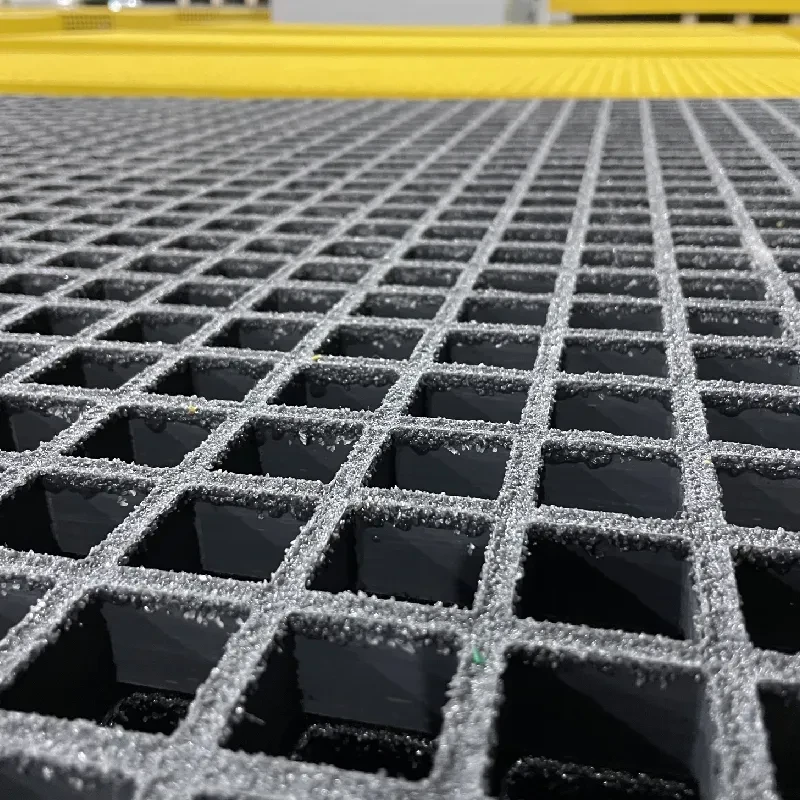loading...
- No. 9, Xingyuan South Street, Dongwaihuan Road, Zaoqiang County, Hengshui, Hebei, China
- admin@zjcomposites.com
- +86 15097380338
- Welcome to visit our website!
Design and Benefits of FRP Sectional Water Storage Tanks
Understanding FRP Sectional Water Tanks
In the realm of water storage solutions, the use of fiberglass reinforced plastic (FRP) sectional water tanks has gained significant popularity due to their numerous advantages over traditional materials. These tanks are designed for durability, versatility, and efficiency, making them an excellent choice for various applications.
What are FRP Sectional Water Tanks?
FRP sectional water tanks are modular tanks made from fiberglass reinforced plastic, a composite material known for its strength and resistance to corrosion. They are manufactured in sections that can be easily transported and assembled on-site, which makes them an attractive choice for both residential and industrial applications.
These tanks can be constructed in a variety of sizes and shapes, tailored to meet the specific needs of any project. Generally, they consist of several rectangular panels that are bolted together, allowing for customization in both capacity and configuration. This modular aspect enables users to expand their storage capacity without the need for completely new tanks, making FRP sectional tanks both convenient and economical.
Advantages of FRP Sectional Water Tanks
1. Corrosion Resistance One of the primary benefits of FRP is its exceptional resistance to corrosion. Unlike metal tanks, which can rust and degrade over time, FRP tanks maintain their integrity even when exposed to harsh chemicals and environmental conditions. This resistance significantly extends the lifespan of the tank and reduces maintenance costs.
2. Lightweight yet Strong FRP is much lighter than traditional materials such as steel or concrete. This lightweight characteristic makes installation easier and more cost-effective, minimizing the need for heavy machinery and reducing transport costs. Despite its lightness, FRP offers remarkable strength, making it suitable for various applications, from agricultural storage to municipal water supplies.
frp sectional water tank

3. Thermal Insulation Another notable property of FRP is its thermal insulation capability. The material effectively reduces heat transfer, which helps maintain the water temperature, reducing the risk of algae growth and ensuring the quality of the stored water. This characteristic is particularly beneficial in regions with extreme temperature variations.
4. High Flexibility and Customization The modular nature of sectional water tanks allows for easy customization. Users can create tanks of virtually any size, and the ability to expand capacity as needs grow enables efficient water management. This flexibility is particularly advantageous for businesses and organizations that may experience variable water demands.
5. Eco-Friendly Option As environmental concerns continue to grow, the use of FRP is seen as a more sustainable option for water storage. The longevity and recyclability of FRP contribute to a lesser environmental impact when compared to traditional materials, aligning with green building initiatives and sustainable practices.
Applications of FRP Sectional Water Tanks
FRP sectional water tanks find a wide range of applications across several sectors. In residential settings, they can be integrated for domestic water storage, rainwater harvesting, or irrigation systems. In industrial settings, they serve as essential components for storing process water, wastewater treatment, and fire protection systems.
Additionally, these tanks are often utilized by municipalities for water supply and treatment facilities. Their adaptability and resilience to chemical exposure make them ideal for many applications where water quality is a top priority.
Conclusion
In summary, FRP sectional water tanks represent a smart investment for anyone looking for a reliable, durable, and efficient water storage solution. Their corrosion resistance, lightweight nature, and thermal insulation capabilities set them apart as an excellent alternative to conventional tanks. As technology advances and environmental considerations become increasingly important, the adoption of FRP sectional water tanks is likely to continue growing across industries, promising a sustainable future for water management.
-
GRP Structures: The Future of Lightweight, High-Performance EngineeringNewsJun.20,2025
-
FRP Water Tank: High-Performance Storage for Corrosive and Clean Water SystemsNewsJun.20,2025
-
FRP Square Tube: The New Industry Standard for Chemical and Structural ApplicationsNewsJun.20,2025
-
FRP Pultruded Profiles: The Ultimate Choice for Lightweight Structural StrengthNewsJun.20,2025
-
FRP Handrails: The Safer, Smarter, and Stronger Choice for Modern InfrastructureNewsJun.20,2025
-
FRP Grating: The Smart Solution for Durable, Lightweight Industrial FlooringNewsJun.20,2025
-
Why Choose a Galvanized Water Tank for Your Storage NeedsNewsMay.21,2025
